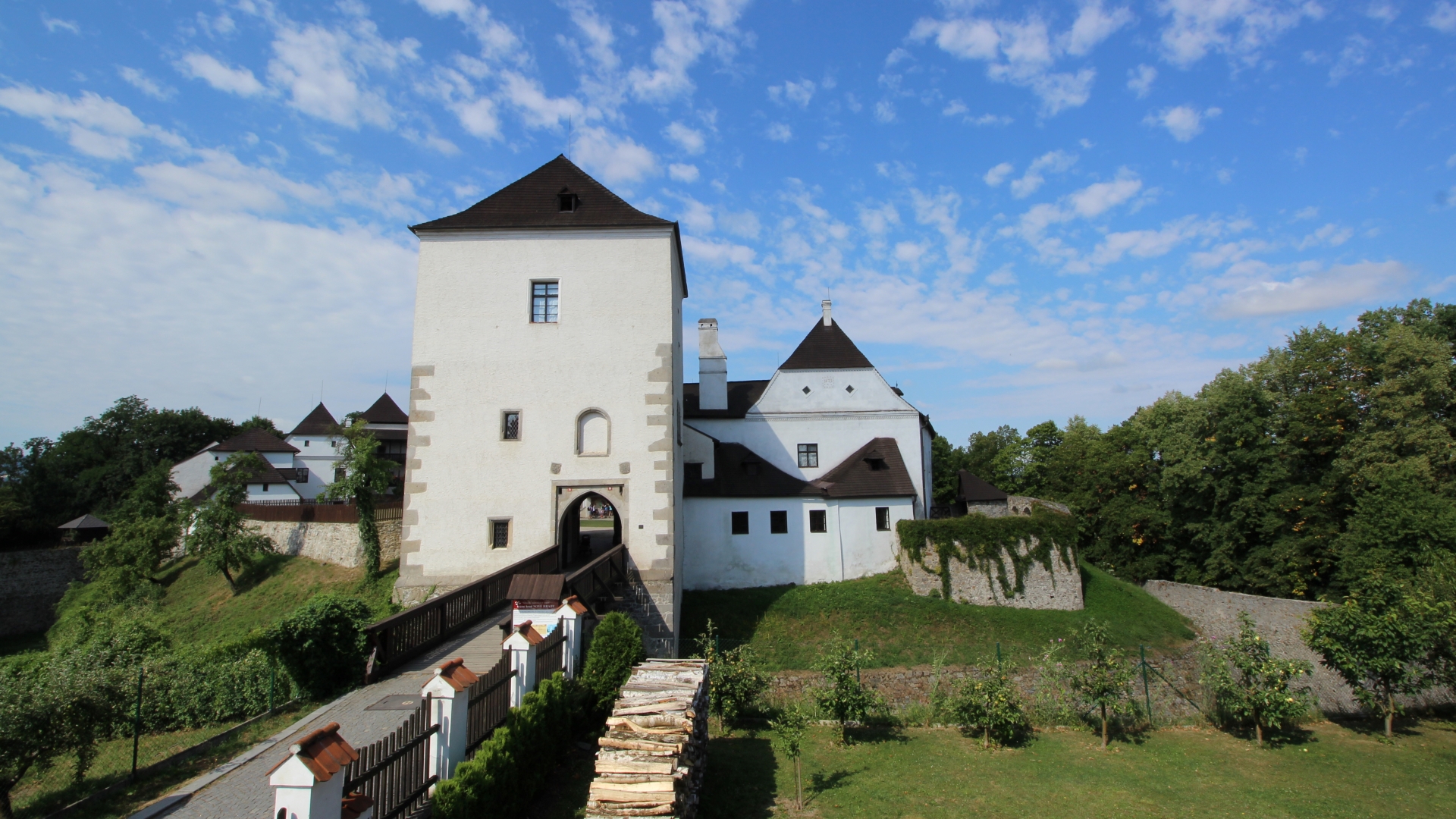Nove Hrady Castle
Written by Alice Bousova

Nove Hrady castle
When the castle was founded in the second half of the 13th century, it probably had a simple disposition consisting of a palace, circled bergfrit tower, and polygonal perimeter wall. From this phase, only two and a half meters wide parts of the wall have remained and it is not known if the castle already had the pass-through disposition with two gates at this time.
The High Gothic reconstruction and extension of the castle have taken place after the year of 1358 when Nove Hrady castle was bought by the House of Rosenberg – construction of the new palace, foundation of the parcan, and fortification of the lower castle.
In the 1390s we were able to see these buildings in the castle: a big castle tower, an original palace from the 13th century (so-called the old house), an Early Gothic palace called the big house, and the third building called the middle house. From the operational and economic building are presented brewery, cowhouses, stables, and granary.
In the 1490s the parcan bulwark was toughened by one square and three cylindrical citadels and the back gate was extended by an outer extension.
The original front gate was in the first decades of the 16th century replaced by a giant two-storeyed Late Gothic gate with a drawbridge. At the west side of the courtyard in the place of an older built-up area was built a new two-storeyed palace, whose windows on the ground floor belong to the first examples of Renaissance in South Bohemia.
In the Late Gothic there was added a castle kitchen, which was stuck to the main gate, and a Renaissance brewery to the back gate, which was working until the Buquoy’s era when it was transformed into apartments.
1573 explosion of the big bergfrit tower – bergfrit was destroyed and the surrounding buildings were also damaged.
The castle was not restored until the reign of Petr Vok of Rozmberk, who had sent an Italian builder Antonio Caneval to the Nove Hrady castle in the year 1605.
The modification was also concerned with the castle moat, which was probably extended and walled in these years, and with its 15 meters depth and 23 meters width it now belongs to the most massive moats in the Czech castle architecture.
After the first half of the 18th century there were established newly shingled roofs, passages were paved and the stables and gates were newly arched. In the years of 1792 – 1798, Jan Nepomuk Buquoy had the building of the palace on the south side of the courtyard rebuilt
into houses of officials and he also had the tower of the main gate increased and into it he had the Buquoy’s archive to be placed
For more information about the South Bohemian region, from which this castle comes, click here and here.


